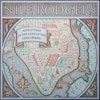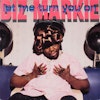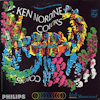In the 2013 BBC documentary Nile Rodgers: The Hitmaker, Roxy Music leader Bryan Ferry said of his friend, “He never had his own name in lights, particularly, but was always behind other names like Chic, Diana Ross, or Sister Sledge.” Years before, Rodgers and bassist/production partner Bernard Edwards, who’d been friends and collaborators since 1970, modeled their revolutionary band Chic after the swank Roxy, but with a soulful beat and a groove you could dance too. After recruiting drummer Tony Thompson, keyboardist Robert Sabino, and top-notch session singers that included Luther Vandross, Chic went on to change the sound of the city in both Black and pop music. “Nile and ’Nard married the string washes of Philly and the funk of JBs and P-Funk,” writer Daryl Easlea documented in his 2001 feature Chic: These Are the Good Times. “The Chic sound was sparse, nuanced, even bleak. The songs would evolve from jams.”
Chic’s self-titled debut on Atlantic Records was released in 1977. The disc contained the dance-floor/radio hit singles “Dance, Dance, Dance (Yowsah, Yowsah, Yowsah)” and “Everybody Dance,” but those songs were just the beginning of the group’s reign. In addition to follow-up albums C’est Chic (1978), with its “Le Freak” single, and Risqué (1979), the Chic Organization scored major successes writing and producing hit albums for Sister Sledge (We Are Family) and Diana Ross (Diana), as well as the underrated Debbie Harry solo project Koo-Koo. Chic’s last smash single as artists was the 1979 classic “Good Times,” a song that served as the foundation of both Sugarhill Gang’s seminal hip-hop single “Rappers Delight” and Queen’s rocking disco jam “Another One Bites the Dust.”
However, two years into the new decade, the band began to splinter, and in 1982, Rodgers and Edwards began planning the last Chic album of that era (Believer) as well as their own separate projects. Each returned to their usual sound factory, the Power Station studio, a state-of-the-art New York City recording facility on Fifty-Third Street, which was their second home, to work on their respective projects. Edwards’s album was called Glad to Be Here while Rodgers’s disc was Adventures in the Land of the Good Groove. “My album is a vehicle for the kinds of songs and musical ideas that wouldn’t fit the Chic format,” Rodgers told Billboard in March 1983, the same month and year the album dropped.
Both albums were commercial flops, but when Rodgers played an advance of Adventures in the Land of the Good Groove for David Bowie, the Brit genius got so excited that it inspired him to dis his semi-regular producer Tony Visconti in favor of hiring the then-thirty-one-year-old guitarist Rodgers to produce his next project. According to one version of the story, Bowie explained to Rodgers that he wanted something like Adventures in the Land of the Good Groove, “But with hits.” The album that came out of their collaboration was 1983’s Let’s Dance, the biggest record of Bowie’s career, and one that contained the massive title track first single, along with sizable follow-ups “Modern Love” and “China Girl.” Afterwards, Rodgers became an in-demand producer, overseeing and playing on albums for INXS, Duran Duran, Madonna, Mick Jagger, and Grace Jones. In a sense, Adventures was a catalyst album that opened many doors.
From the first track, “Land of the Good Groove,” Rodgers makes it clear that although the music was rooted in sweaty soul, he would take the sound wherever he wanted as he mixed African percussion with LinnDrum and layered the track with acoustic and electric instrumentation. Coming at a time when electronic instruments were viewed as taking over from the traditional in the new wave of the Human League, Heaven 17, New Order, and others, Rodgers took the solo opportunity to build on that plugged-in sound.
Nonetheless, as Stevie Wonder, George Clinton, and Prince had proved on their records, electronic instruments didn’t have to sound cold if the music was hot. The standout track, “All in Your Hands,” is a song about sex that sounds like the futuristic goth gospel of A.R. Kane. Vinyl Factory journalist Sean P. wrote in 2013, “‘All in Your Hands’ is one of the more tuneful tracks on the LP, with an undemanding pop slant and bittersweet ‘up’ feel, which in keeping with the rapidly changing musical landscape of the early 1980s, relies more on electronics than acoustics. The jangly acoustic guitar adds a commercial edge to a very radio-friendly track which may have been a good choice for a single.”
While the album wasn’t a disco project, the (almost) title single celebrated New York City nightlife in all its hedonistic glamour. From drugs (“Lord knows where my money goes,” Nile sang) to clubs (“Lord knows where my body goes every night / I try to fight it long as there’s good music / Long as there’s an all night dance in my romance”), “Land of the Good Groove” takes me back to that post-disco Manhattan where Danceteria had replaced Studio 54. At Danceteria, one could hear a variety of musical styles blaring from the soundsystem including Afrobeat, Brit punk, American funk, West Indian reggae, uptown hip-hop. That mixture and vibe rhythmically radiates throughout the eight tracks on Adventures in the Land of the Good Groove.
One of the more interesting aspects of the album was Rodgers musically shouting out various hometown talents and contemporaries, such as on “Most Down,” which reminds me of the (then) newfound funk of the nerdy Talking Heads. There are sinister synths mixed with vocoder-textured opening vocals, LinnDrum, and powerful background vocals that sound like both Saturday night and Sunday morning. Meanwhile, the rowdy upbeat sex song “Get Her Crazy” has an island riddim guitar and cool dude vocals that reminds me of Kid Creole and the Coconuts axe-man and vocalist August Darnell.
Edwards and Rodgers made solo albums, but still allowed each other, as well as drummer Tony Thompson, to be featured. One of my favorite jams on Rodgers’s album was “Beet,” a song that gives the drummer some, as James Brown used to say, showcasing Thompson’s boom-bap skills. Two other beloved songs were “Rock Bottom,” where Rodgers got to showcase his inner Santana, and the beautiful ballad "My Love Song for You,” a stirring duet with former LaBelle vocalist Sarah Dash.
With Adventures in the Land of the Good Groove, producer Nile Rodgers was on a mission to creatively stretch and sonically experiment with various sounds while simultaneously preparing himself to move from his comfort zone to the next level of aural auteurism.


